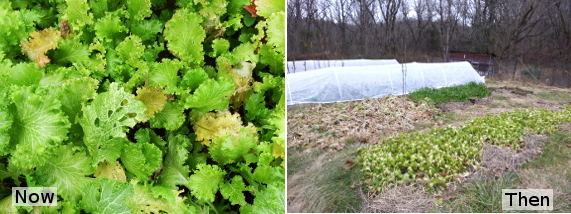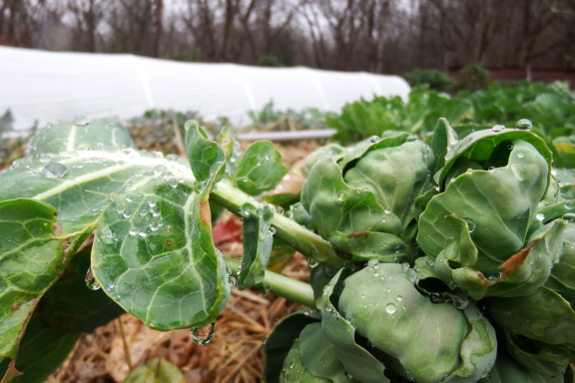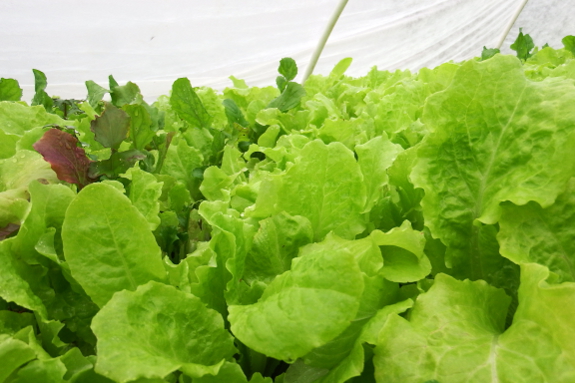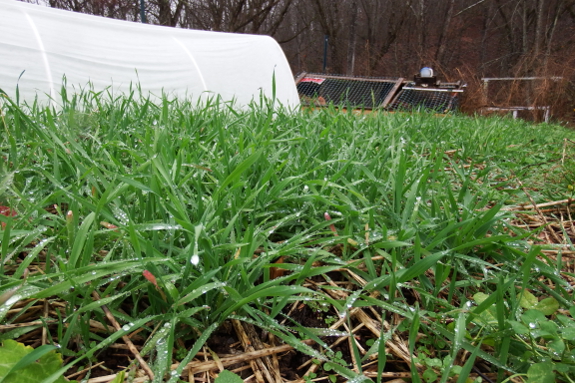
A warm November

After a cold first frost, the rest of our autumn turned out to be relatively mild. Comparing photos taken in the garden Monday to those taken a year ago
shows a huge difference. For example, we're still eating only slightly
damaged mustard in the open garden, while last year's mustard was too
frozen to enjoy by this point.

Similarly, our late
Brussels sprouts are bulking up dramatically, pushing me toward turning
this into a twice-weekly vegetable rather than a once-weekly treat.
"Maybe we should have
shared some of those with your family at Thanksgiving after all," Mark
conceded during our last sprout dinner. We looked at each other, then
chorused, "Or maybe not!" Yes, we're Brussels sprout hoarders.

Under the quick hoops, the lettuce is growing like crazy. Technically, we've been in what Elliot Coleman calls the Persephone Days
for over a week, but I've recently concluded that his analysis of what
causes winter greens to stop growing is too simplistic. For us, day
length is less important than average daily temperature, meaning that
our greens will keep right on growing as long as they get enough warm
weather to keep their roots thawed. And, right now, that's still very
much the case.

As one more data point in
our delightfully mild November, take a look at this rye, planted just
before Halloween. That's really too late to be seeding even this most
winter-hardy cover crop, but I figured I'd give it a shot anyway. And
the top matter is already taller in those late beds than it was in most
of our garden after an entire winter of growth last year.
Of course, our weather
changes on a dime. So we could have the world's coldest December ahead.
But, for now, I'm enjoying a winter in which the lowest low has thus far
been a fleeting 17, meaning that we've yet to burn any firewood other
than branches from the dead peach trees. Maybe this week we'll finally
split some real firewood.
Want more in-depth information? Browse through our books.
Or explore more posts by date or by subject.
About us: Anna Hess and Mark Hamilton spent over a decade living self-sufficiently in the mountains of Virginia before moving north to start over from scratch in the foothills of Ohio. They've experimented with permaculture, no-till gardening, trailersteading, home-based microbusinesses and much more, writing about their adventures in both blogs and books.
Want to be notified when new comments are posted on this page? Click on the RSS button after you add a comment to subscribe to the comment feed, or simply check the box beside "email replies to me" while writing your comment.
